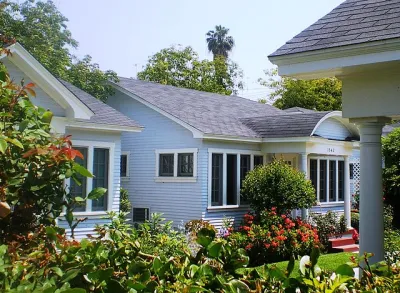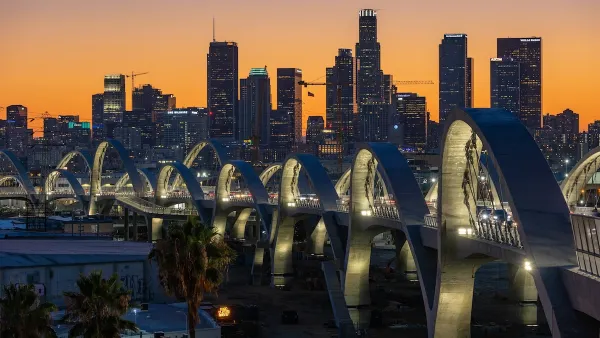The winning designs for the "Low Rise" design challenge offer an aspirational image of density for Los Angeles.

An innovative design challenge sponsored by the city of Los Angeles announced its winners this morning.
The "Low Rise: Housing Ideas for Los Angeles" design challenge is the work of Los Angeles Chief Design Officer Christopher Hawthorne and the Office of Budget and Innovation operated by the office of Mayor Eric Garcetti.
With the city tasked with an aggressive scheduled for revamping its community plans while also struggling with runaway housing costs and increasing homelessness, the design challenge comes at an opportune time, according to a detailed article on the contest by Carolina Miranda for the Los Angeles Times.
This makes it a critical time in which to talk about how L.A. neighborhoods might be designed with increased density in mind — preferably in ways that steer clear of sky-is-falling scenarios about “Manhattanization” (absurd) or reactive panic to whatever density legislation State Sen. Scott Wiener might be working on in Sacramento.
In addition to reporting the details of the winning designs, Miranda also offers a helpful, and underappreciated, history of dense, urban design in Los Angeles:
Los Angeles might be known as a city of sprawl, but it’s also a place that can do density remarkably well — and has done so for more than a century. L.A. has been the site of thoughtfully designed garden apartments like Baldwin Hills’ Village Green, which is a National Historic Landmark, and, of course, there are the city’s signature bungalow courts, the workaday residences that inspired the literature of Charles Bukowski and avant-garde interpretations by architect Irving Gill. (See his Horatio West Court in Santa Monica, completed in 1919.)
As for the results of the Low Rise contest: architects were asked to imagine "new, higher density options rooted in the architectural traditions of the region." Each first-place winner in several categories will receive a $10,000 award. The categories are listed by the contest's fact sheet, published today on Google Drive, as follows: corners, fourplex, (re)distribution, and subdivision.
As for the intended purpose of the contest, Miranda offers this explanation: "The challenge is a conversation starter and design exercise. It’s also a needed counter to commercial real estate developers, whose ideas of density tend to be based on a single principle — how many dollars they can squeeze out of every square foot — with little regard for green space or other community needs."
For more on the contest and its results, see also a Twitter thread posted by Christopher Hawthorne this morning.
After considering a staggering total of 380 entries in four categories, we're thrilled to announce the winners of Low-Rise design challenge! Details on the winning entries, along with renderings and links to full submissions, can be found here:https://t.co/XV49a0PtWt pic.twitter.com/anx8snh5yu
— Christopher Hawthorne (@HawthorneCDOLA) May 17, 2021
FULL STORY: An architectural competition imagines density — done in an L.A. way

Analysis: Cybertruck Fatality Rate Far Exceeds That of Ford Pinto
The Tesla Cybertruck was recalled seven times last year.

National Parks Layoffs Will Cause Communities to Lose Billions
Thousands of essential park workers were laid off this week, just before the busy spring break season.

Retro-silient?: America’s First “Eco-burb,” The Woodlands Turns 50
A master-planned community north of Houston offers lessons on green infrastructure and resilient design, but falls short of its founder’s lofty affordability and walkability goals.

Test News Post 1
This is a summary

Analysis: Cybertruck Fatality Rate Far Exceeds That of Ford Pinto
The Tesla Cybertruck was recalled seven times last year.

Test News Headline 46
Test for the image on the front page.
Urban Design for Planners 1: Software Tools
This six-course series explores essential urban design concepts using open source software and equips planners with the tools they need to participate fully in the urban design process.
Planning for Universal Design
Learn the tools for implementing Universal Design in planning regulations.
EMC Planning Group, Inc.
Planetizen
Planetizen
Mpact (formerly Rail~Volution)
Great Falls Development Authority, Inc.
HUDs Office of Policy Development and Research
NYU Wagner Graduate School of Public Service




























